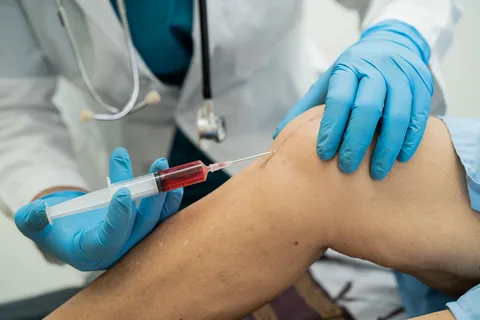What Insurance Companies Cover PRP Injections?
Introduction
When it comes to medical procedures, insurance coverage can be a game-changer. One such procedure that has been gaining traction is PRP (Platelet-Rich Plasma) injections. These injections have shown promising results in various fields of medicine, including orthopedics, dermatology, and sports medicine. However, understanding which insurance companies cover PRP injections can be a bit of a maze. Let’s dive into the details and make sense of it all.

What are PRP Injections?
PRP injections involve extracting a small amount of a patient’s blood and spinning it in a centrifuge to separate the platelet-rich plasma. This concentrated plasma is then injected back into the patient’s body at the site of injury or a specific treatment area. The high concentration of platelets in PRP injections provides a rich source of growth factors, which can aid in tissue repair, reduce inflammation, and promote healing1.
Benefits of PRP Injections
The potential benefits of PRP injections are vast. They are commonly used to treat chronic pain conditions, such as tendinitis, osteoarthritis, and even hair loss. These injections have gained popularity due to their minimally invasive nature, shorter recovery time compared to surgery, and the potential to eliminate the need for long-term medication1.
Insurance Coverage for PRP Injections
Insurance coverage for PRP injections can vary widely. Some insurance companies offer coverage, while others may consider it an experimental or cosmetic procedure, leading to limited or no coverage2. Factors that influence coverage include the type of insurance plan, the specific medical condition being treated, and the insurance company’s policies3.
Common Insurance Plans that Cover PRP Injections
- Tricare: Tricare provisionally covers PRP injections for specific conditions such as knee arthritis and tennis elbow4.
- Aetna: Aetna may cover PRP injections if they are used in conjunction with surgery5.
- Anthem Blue Cross and Blue Shield: This company will cover the injections if they are being used to treat tendinitis or other injuries5.
Steps to Check Insurance Coverage for PRP Injections
- Review Your Insurance Policy: Start by reviewing your insurance policy documents to see if PRP injections are mentioned.
- Contact Your Insurance Provider: Call your insurance provider directly to inquire about coverage for PRP injections.
- Get a Physician’s Recommendation: Having a physician’s recommendation can sometimes help in getting approval for coverage.
- Submit a Pre-Authorization Request: Some insurance companies require a pre-authorization request before they approve coverage for PRP injections.

Tips for Getting Insurance Coverage for PRP Injections
- Document Medical Necessity: Ensure that your physician documents the medical necessity of the PRP injections.
- Provide Supporting Evidence: Submit any supporting evidence, such as medical studies or case reports, that demonstrate the effectiveness of PRP injections for your condition.
- Appeal Denials: If your initial request for coverage is denied, don’t hesitate to appeal the decision. Provide additional documentation and evidence to support your case.

Conclusion
Navigating the world of insurance coverage for PRP injections can be challenging, but it’s not impossible. By understanding your insurance policy, communicating with your provider, and providing the necessary documentation, you can increase your chances of getting coverage for this innovative treatment. Remember, persistence is key, and don’t be afraid to appeal if your initial request is denied.
External Links
I hope this article helps you understand the intricacies of insurance coverage for PRP injections. If you have any further questions or need more details, feel free to ask!
For more information, you can visit the following websites: Frezsa, Qruma, Mrafb, Deffrent, Toreef, Gulvezir, Flex44d, and AACPI. Each site offers unique resources and insights, so feel free to explore them to find the information you need.
Leave a Reply